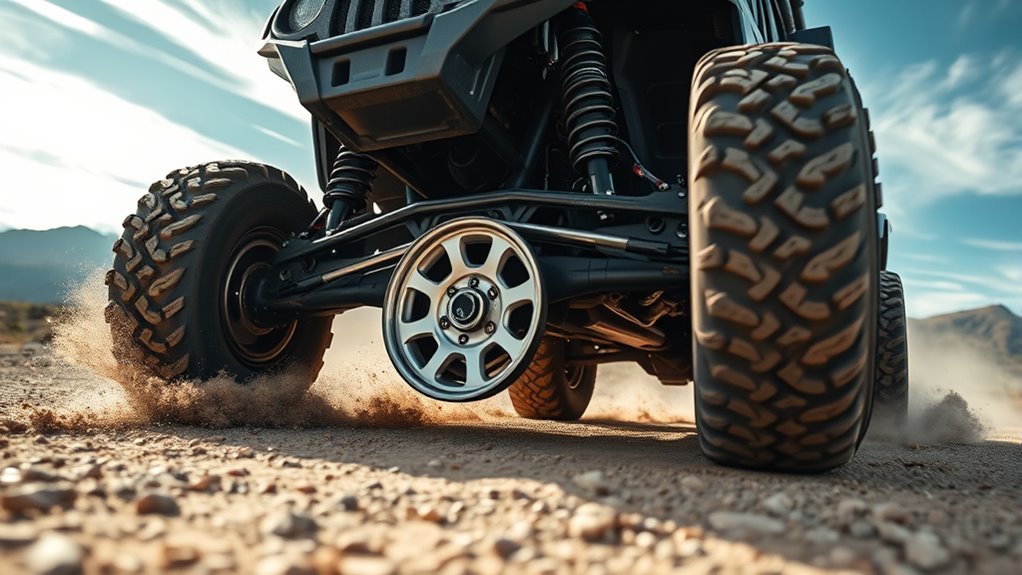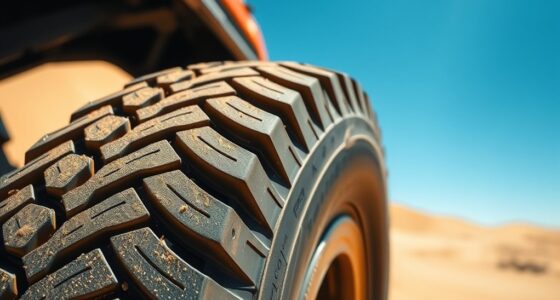Reducing unsprung weight improves your off-road acceleration by allowing your suspension to react faster and keep tires in better contact with uneven ground. Lighter wheels, tires, and suspension parts mean less rotational inertia, so less energy is wasted, and your vehicle responds more quickly to terrain changes. This enhances traction, control, and acceleration over rough terrain. Want to discover how specific modifications can help you conquer tougher trails? Keep going to learn more.
Key Takeaways
- Reducing unsprung weight allows wheels to respond faster to terrain changes, enhancing off-road acceleration.
- Lighter wheels decrease rotational inertia, enabling quicker spin-up during acceleration over uneven surfaces.
- Less unsprung weight minimizes suspension lag, providing more immediate power transfer to the ground.
- Reducing weight in suspension components improves overall vehicle responsiveness and acceleration on rough terrain.
- Lighter off-road parts decrease energy loss, resulting in smoother, faster acceleration over obstacles.
The Science Behind Unsprung Weight and Vehicle Dynamics
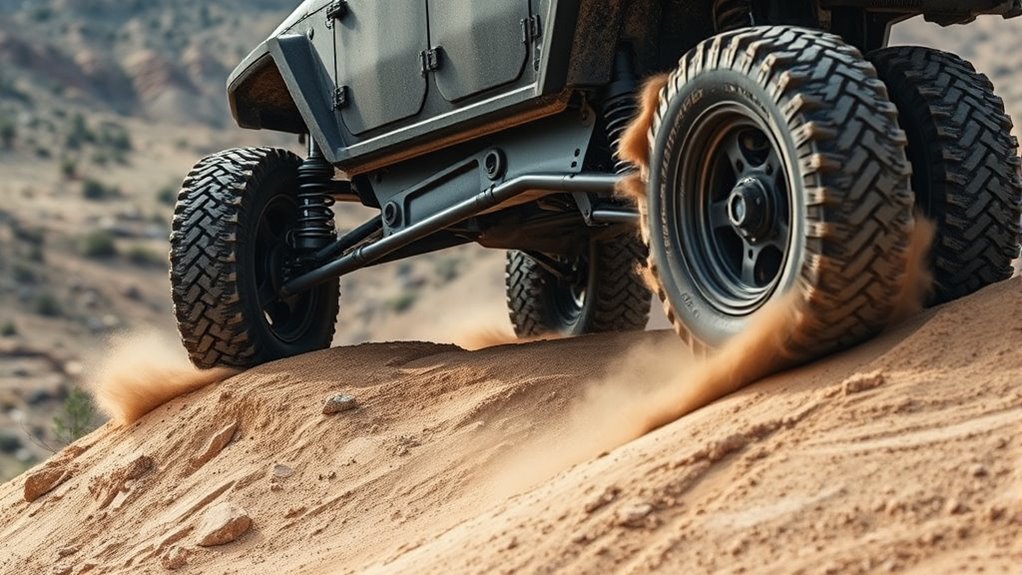
Understanding how unsprung weight affects vehicle dynamics starts with recognizing its role in a vehicle’s suspension system. Unsprung weight includes components like wheels, tires, brake assemblies, and parts of the suspension that aren’t supported by the vehicle’s springs. When you drive over rough terrain, this weight directly influences how quickly the suspension responds to bumps and dips. Heavier unsprung weight resists changes in motion, making the suspension less responsive to uneven surfaces. This resistance causes the wheels to lose contact with the ground more easily, reducing stability and control. Conversely, lighter unsprung weight allows the suspension to react faster, improving ride quality and handling. By understanding this relationship, you can better appreciate how unsprung weight impacts off-road acceleration and overall vehicle performance. Proper tuning of components such as performance brakes or lightweight wheels can significantly enhance off-road capabilities.
How Unsprung Weight Affects Traction and Grip
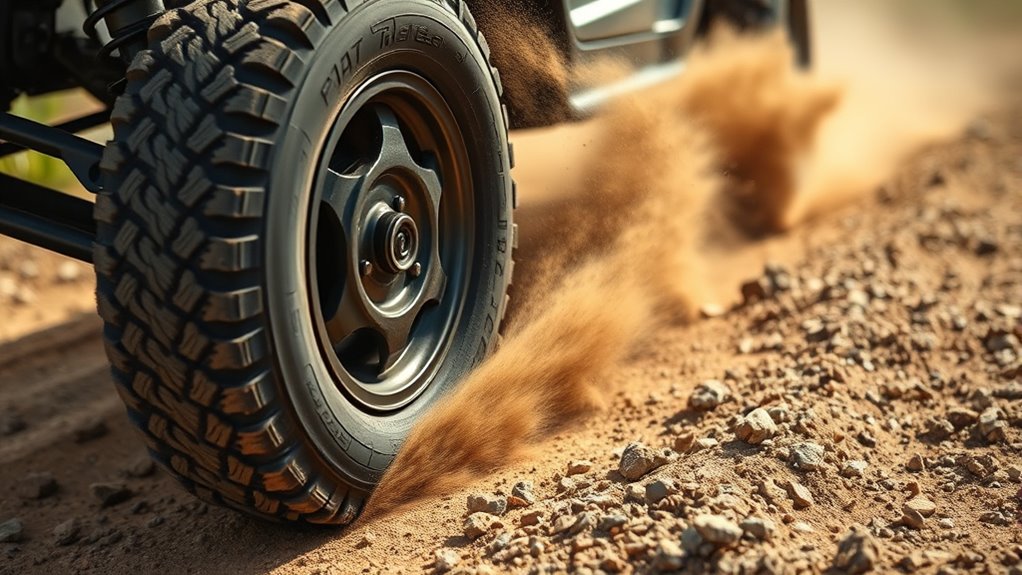
The amount of unsprung weight directly impacts how well your tires maintain grip on uneven terrain. When you have less unsprung weight, your suspension reacts more quickly, allowing the tires to stay in contact with the ground better. This improved contact enhances traction, especially on rough surfaces where maintaining grip is *essential*. Heavier unsprung components, like large wheels or heavy braking assemblies, increase the moment of inertia, making it harder for your suspension to respond promptly. As a result, tires may lose contact or bounce over obstacles, reducing grip. By minimizing unsprung weight, you help your suspension absorb impacts more efficiently, keeping your tires pressed firmly against the terrain. This better contact maximizes traction and helps you maintain control during off-road challenges. Additionally, incorporating rustic materials like wood or stone can improve the durability and aesthetic of your vehicle’s components, ultimately supporting better off-road performance.
The Impact of Unsprung Weight on Off-Road Acceleration Performance
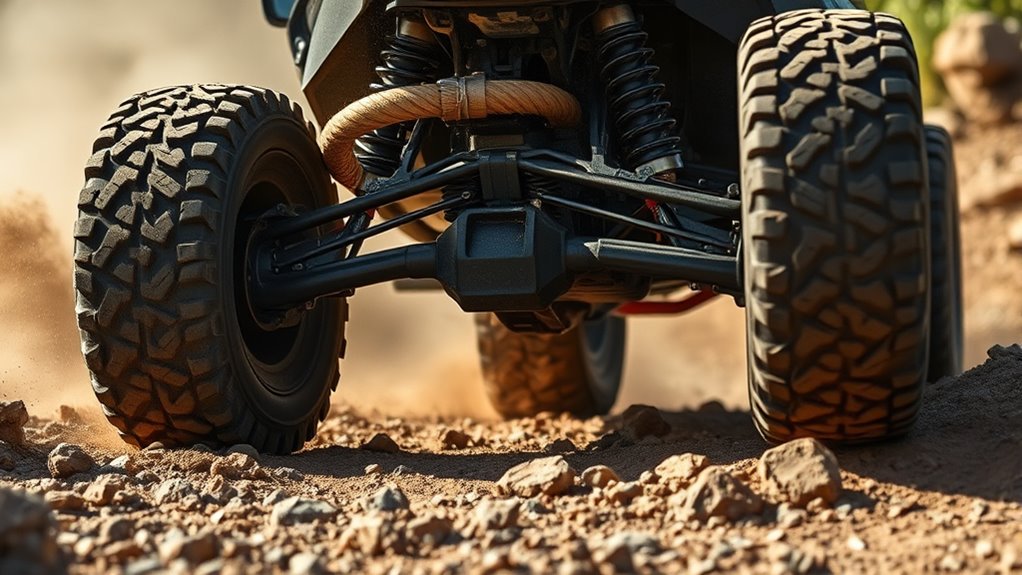
When you reduce unsprung weight, your off-road vehicle can accelerate more quickly because the suspension reacts faster and more efficiently. Less unsprung mass means your wheels respond more directly to terrain changes, translating to better acceleration and smoother power transfer. This improvement allows for quicker throttle response and better control during rapid starts or climbs. Additionally, lighter wheels and components decrease rotational inertia, making it easier to spin up and maintain speed. Reduced unsprung weight also minimizes the energy lost through suspension movement, maximizing power delivery to the ground. This results in improved acceleration across uneven terrains. Optimized suspension dynamics enhance overall vehicle responsiveness and handling.
Strategies for Reducing Unsprung Weight in Off-Road Vehicles
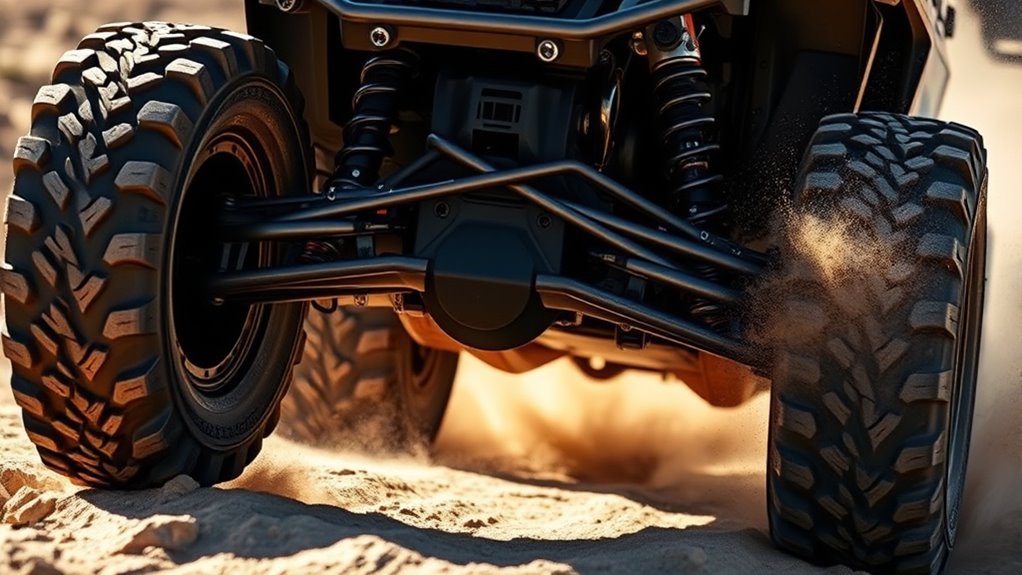
Reducing unsprung weight involves selecting lighter components and implementing strategic modifications to your off-road vehicle. Focus on replacing heavy parts with lightweight alternatives, such as aluminum wheels or carbon-fiber driveshafts. Consider upgrading suspension components to lighter materials and removing unnecessary accessories that add weight. These changes improve your vehicle’s agility, traction, and shock absorption. Additionally, choosing Kia Tuning options designed for weight reduction can further enhance off-road performance. To help visualize, here’s a simple comparison:
| Heavy Components | Lightweight Alternatives |
|---|---|
| Steel wheels | Aluminum wheels |
| Heavy driveshaft | Carbon-fiber driveshaft |
| Large tires | Smaller, lighter tires |
| Stock suspension | Upgraded lightweight suspension |
| Excess accessories | Minimal, essential parts |
Real-World Examples and Benefits of Managing Unsprung Weight
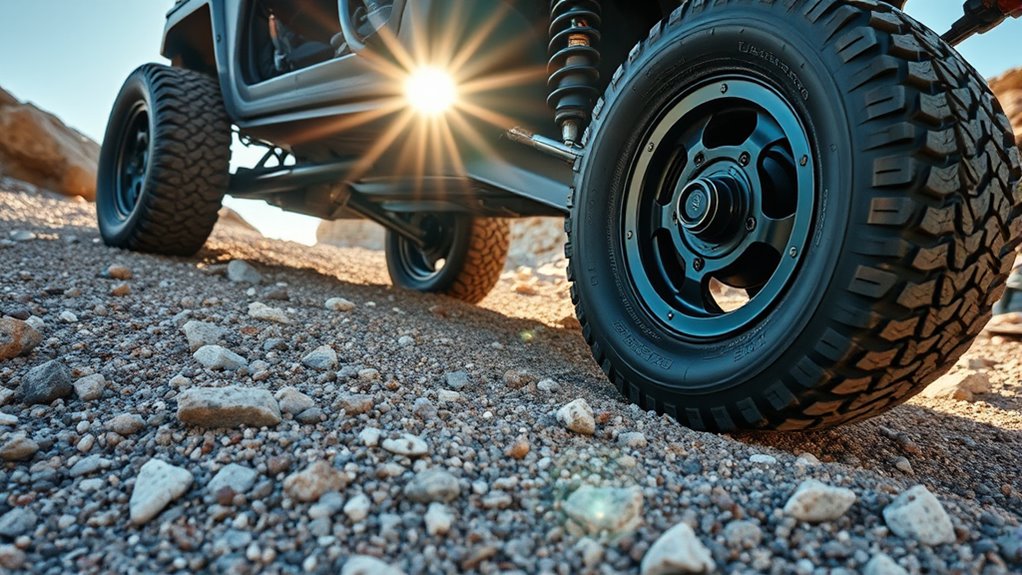
By managing unsprung weight effectively, off-road enthusiasts often see immediate improvements in vehicle performance. Lighter wheels and tires can lead to quicker acceleration, better handling, and increased traction over rough terrain. For example, racers who switch to forged aluminum wheels notice faster response times and reduced tire wear. Similarly, removing unnecessary components from suspension systems enhances shock absorption and overall ride quality. These adjustments can also extend vehicle lifespan by reducing strain on critical parts. Additionally, choosing high-quality animated movies can inspire and motivate off-road projects through engaging storytelling and creative visuals.
Frequently Asked Questions
How Does Unsprung Weight Influence Vehicle Handling in Different Off-Road Terrains?
Unsprung weight considerably influences your vehicle’s handling across various off-road terrains. When you have less unsprung weight, your suspension responds more quickly to bumps, giving you better control and stability. On uneven terrain, lower unsprung weight allows the wheels to maintain better contact with the ground, improving traction and maneuverability. Conversely, heavier unsprung components can cause sluggish responses, making it harder to navigate tricky or rough surfaces effectively.
Can Reducing Unsprung Weight Improve Fuel Efficiency During Off-Road Driving?
Reducing unsprung weight can help improve your fuel efficiency during off-road driving. When you lighten components like wheels and brake assemblies, your vehicle requires less energy to move and respond to terrain changes. This means your engine doesn’t have to work as hard, saving fuel. Keep in mind, though, that lighter parts must still be durable to handle rugged conditions, so choose wisely for the best balance of efficiency and strength.
What Materials Are Most Effective for Lowering Unsprung Weight in Off-Road Vehicles?
You wonder which materials can cut unsprung weight in off-road vehicles. The answer lies in lightweight, durable options like aluminum alloys and carbon fiber, which are strong yet considerably lighter than steel. These materials reduce mass without sacrificing strength, enhancing maneuverability and acceleration. By choosing the right materials, you can enable better off-road performance, making your vehicle more responsive and efficient as you tackle rugged terrains.
How Does Unsprung Weight Impact the Lifespan of Suspension Components?
You might notice that increased unsprung weight puts extra stress on your suspension components, causing them to work harder and wear out faster. Heavier components experience more fatigue and are prone to early failure, reducing their lifespan. By minimizing unsprung weight, you ease the load on your suspension, helping parts last longer and stay in better condition, ultimately improving your vehicle’s durability and off-road performance.
Are There Specific Off-Road Vehicle Types That Benefit Most From Lightweight Suspension Parts?
You’ll find that lightweight suspension parts benefit off-road vehicles designed for agility and speed, like dune buggies and motocross bikes. These vehicles need quick handling and responsive steering to navigate rough terrain effectively. By reducing unsprung weight, you gain better suspension response and control, making it easier to tackle obstacles. If you’re into high-performance off-road adventures, opting for lightweight components enhances your vehicle’s performance and maneuverability on challenging terrains.
Conclusion
By understanding how unsprung weight influences off-road acceleration, you can reveal better traction, control, and performance. Reducing this weight isn’t just a technical tweak; it’s the secret key to conquering rugged terrains with confidence. Imagine your vehicle as a finely tuned instrument, where every ounce matters. So, take control—lighten the load, improve your grip, and let your vehicle dance effortlessly over every bump, turning obstacles into opportunities for victory.
